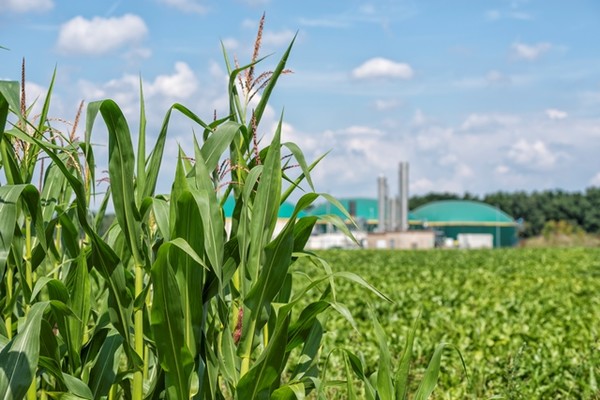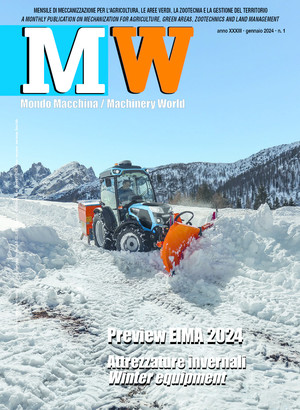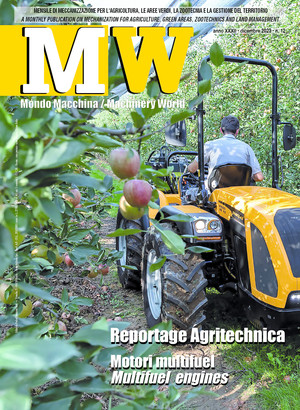
Biomass, a campaign against fakes
Sustainable progress must be supported not only on the economic level, but also on the cultural level. For implemeting works of public interest it is necessary to promptly inform and involve the communities of the territories concerned. In the absence of adequate participation processes, there is a risk of also blocking virtuous initiatives due to fears based on unfounded news. With this in mind, Itabia, together with FederUnacoma and the Nuova Energia magazine, launched an information campaign during EIMA Energy "So much rubbish about biomass"
In Italy, as in the rest of the world, the desire for change is increasingly felt and shared. This necessity is perceived at all levels and concerns the most disparate fields. The concern for how things are going involves everyone, starting from the ordinary citizen up to the Pope, touching upon topics ranging from individual conduct to global political strategies.
Unfortunately, today this great and understandable desire for improvement goes hand in hand with a certain mistrust towards institutions (bodies set up for a particular purpose) appointed to find realistic solutions to very complex problems.
The distrust is widespread, where politicians as a whole are perceived as a caste, the scientists are seen as tools of the multinationals, the entrepreneurs are mere businessmen, and the clever employees as timecard frauds, etc.
A side effect of this dynamic is given by the NIMBY phenomenon (Not In My BackYard), which in Italy has reached such a scale as to justify the creation of an Observatory.
This year’s research shows the collapse of requests for authorizations or environmental impact assessment procedures for new plants, which means that we are witnessing a decline in projects. This is certainly not a positive signal for a country the needs modernization.
According to data from the “Nimby Forum” report, in 2017 there were 317 complaints from local communities for new infrastructure projects (energy, waste, transport, etc.). Most of the objections are found in the energy sector (57% of cases) where they are indiscriminately rejected, both platforms for research on hydrocarbons (37 cases) and biomass plants (35 cases). Basically the signal is controversial, since renewable sources are supported in combating fossil fuels.
Another targeted sector is waste treatment (36%), with the opposition to waste-to-energy plants (26 cases), to anaerobic digestion and composting plants (capable of producing biogas or biomethane and quality compost) in 18 cases, and to municipal waste treatment facilities (13 cases). The various technological options for waste management, including those that are more sustainable and inspired by the principles of a circular economy, therefore appear to be totally blocked.
For the author of this article, an inexplicable fury aimed at the various plant systems for exploiting biomass is noticeable, in spite of the technologies being mature and reliable, politics recognizing their usefulness, science ensuring their efficiency and the environment benefiting from them.
Since immobility will not lead to any change, it is clear that we need to work better at the communication level. The complexity of the issues to be solved imposes a very deep level of knowledge that can not be based only on the information found on the web where fake news becomes viral.
To face this stalemate, Itabia, with FederUnacoma and the Nuova Energia magazine, launched a truthful information campaign during EIMA Energy. “So much rubbish about biomass”.
Containing the spread of “hoaxes” is not easy given that the channels where fake news run at full speed - starting from social networks - tend to thrive on ads, slogans, and “logic” compressed into a few phrases. More structured reasons are not taken into consideration. A more organic and in-depth approach is avoided so as not to waste precious time. We have thus chosen to summarize the main fake news items in circulation and, with attractive and easy-to-read graphics, the relevant accredited information that disproves them.
The alleged conflict between energy and food does not exist. To date, in Italy 300 thousand hectares are dedicated to energy crops, in many cases in rotation with food crops (therefore in succession and not alternatively), on about 2.3% of the Used Agricultural Area (UAA). The real and only problem is the abandonment of cultivated lands, given that in the last 40 years - in absolute silence - 5 million hectares have been lost. In this time frame, the UAA has shrunk from 18 to 13 million hectares, the equivalent of 340 football fields per day.
The forest is not a museum and should be managed productively. The Italian forest surface area has doubled in 50 years, from 5.5 to over 11 million hectares. The national wood harvest in the last decade, just over 8 million m3 annually, is in the order of a quarter of the annual increase, compared to 65% of the European average. A forest where you do not cut the vegetation is suffering from neglect and is easy prey to devastating fires.
The paradox of wood. Precisely because of the scarce use of woodland resources, Italy experiences a series of paradoxes that represent a unique feature on the continental scene. We are the 2nd European wood importer (after the UK), the 1st importer of wood from the Balkans and Southern Europe, the world’s 1st importer of firewood and pellets for residential use, the 4th world importer of wood chips. The development of bioenergy could guarantee a solid demand (in terms of volumes and projection in the long term) that would make the supply chain of raw materials “Made in Italy” more desirable.
Agricultural residues are a precious resource. Without displacing dedicated crops, around 30 million tonnes of wood-cellulose biomass are available each year, to which we can add 100 million tonnes of livestock manure. The exploitation of this field of green energy would allow drastic cuts to be made in fossil CO2 emissions every year.
Biomass power plants are not incinerators. For a woody biomass power plant, a specific authorization and technologies are required that are distinct from those of waste treatment plants.
Bioenergy is not what makes utility bills heavy. Considering the cost of incentives for bioenergy by the GSE (Energy Services Manager) for 2017 and comparing this amount to the national and consumption, we obtain an effect on the average unit cost of energy of about 1.2-1.3 euro cents per kWh.
Biogas grows without exploding. About 1,500 biogas plants have been built in Italy, well integrated in the agricultural/territorial landscape. The total power is about 1 GW, the size of a single nuclear power plant. In contrast with radioactive waste, the residues of biogas plants (the so-called digestate) do not present any disposal problems. On the contrary, they are an excellent soil improver to restore fertility to agricultural soils.








